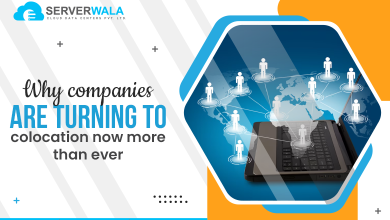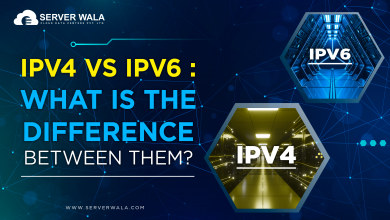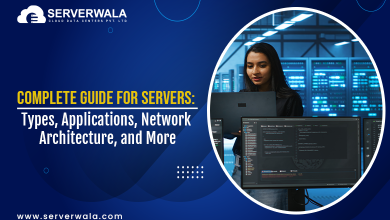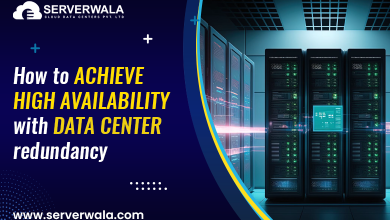Why Data Center Location Matters: How to Choose the Right Location for Your Server?
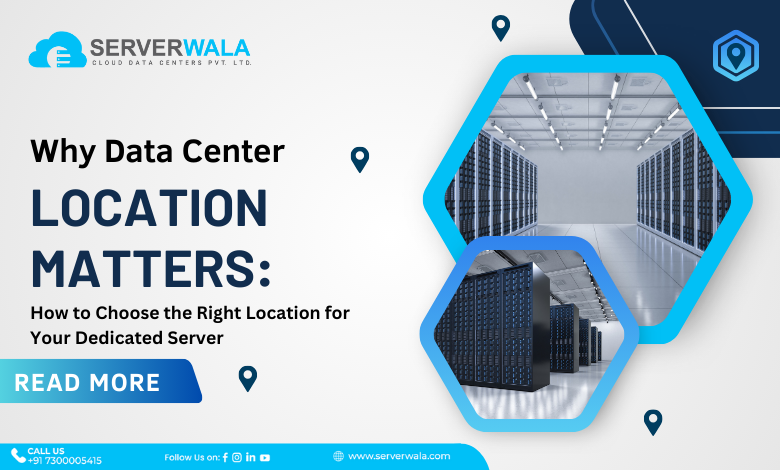
Introduction
Data centers, server farms, hosting facilities, whatever you call them, in every way, this term exudes importance. This infrastructure is the backbone of online presence and data safety. So, how do you zero in on the best suitable data center for your valuable information and digital image?
This article will explain the importance of data center location and provide a step-by-step analysis of choosing the best server farm.
Definition of Data Center
Data centers are like cold storage facilities for produce. They are specialized facilities that store large amounts of digital data and computing resources securely. Data centers are used to support various applications and services like websites, cloud computing, databases, content delivery, and more. They play a significant role as the backbone of the digital world.
The main purpose of both data centers and cold storage facilities is to store and preserve valuable assets. For data centers, these assets are digital information, applications, and services that need protection from loss, unauthorized access, and environmental factors. Data centers and cold storage facilities require precise climate control to maintain a consistent temperature and humidity.
Security is crucial for both data centers and cold storage facilities. Data centers use physical and digital measures to protect sensitive data. Similarly, cold storage facilities implement security protocols to prevent theft and maintain the quality of stored produce.
Data centers are designed to efficiently store and manage digital assets. Their infrastructure is carefully designed to ensure quick access to data and resources. Data centers act as centralized hubs for data access and processing. They distribute digital data and computing resources to end-users and applications.
Data centers can be small server rooms or massive purpose-built facilities, while cold storage facilities come in various sizes depending on the volume of produce they need to store and distribute.
Does Data Center Location Really Matter?
Data center location is a big deal because it affects performance, security, and costs. There are a few key reasons why server facility location is so important. Firstly, the closer a data center is to its users, the faster it can respond to them. With a wide choice of regions to store your data, it becomes easy to serve up web content to users wherever they are, reducing the time it takes for websites to load.
Secondly, when you have hold of a provider that offers a variety of locations, you can store your data in different regions. This strategy is helpful during the occurrence of a disaster in the same area where you have your data stored. Opting for different storage regions helps ensure round-the-clock availability of data regardless of the situation in the area.
Thirdly, certain groups of countries, like the European Union, mandate clients to store data related to European countries within the boundaries of Europe. In such a situation, the data center location considerations become even more important.
Finally, the better the location and infrastructure of the data center, the better would be the server performance. Whether it is quick data access for business or day and night availability of data on the website, a powerfully secured server farm will empower the data transmission process.
Steps to Choose the Right Location for Your Server
Deciding on the best location for your server is crucial for optimal performance, reliability, and accessibility. Follow these steps to know where should a data center be located.
Locale of the end-user:
The best data center location is the one that is closest to your target audience. This statement has been repeated numerous times, but do you know why? The proximity of the server farm and the audience minimizes latency and improves the speed of data transfer.
Factors affecting network infrastructure:
Along with the geographic location of the server farm, the network redundancy and capacity greatly affect the performance of the server. Look for low latency, high bandwidth, and redundancy in network connections to guarantee stable connectivity.
Availability of High-Performance Hardware:
Ensure that the data center provides up-to-date server hardware and equipment, including the latest processors, ample RAM, and high-speed SSD or NVMe storage. Evaluate the data center’s hardware upgrade options to ensure future scalability.
Facility of comprehensive server solution:
When choosing a data center, make sure they offer complete services such as physical security, climate control, backup power sources, and 24/7 technical support. Keep the information concise and organized, putting the most important details first. Avoid using jargon and legal language, opting for everyday vocabulary instead. Use active voice to convey the subject’s actions.
Evaluate the budget for the service:
When choosing a location for your server, there are significant cost differences to consider based on geography. It’s important to balance your budget with the server’s needs and the quality of services available in that location. Organize your search by focusing on the most important factors first and keep your sentences concise and to the point.
Finally, it is worth noting that data center maps offer a comprehensive overview of data center operations. They enable swift identification of problems, efficient allocation of resources, and proactive management. These maps also assist data center experts in maintaining uptime, optimizing cooling and power usage, and addressing issues promptly, thus ensuring the dependability and performance of the data center infrastructure.
Also Read: What are Edge Data Centers? (Complete Guide)
Conclusion
Data center location can have a significant impact on the costs of real estate, labor, and energy. As a client, you have the option to choose a location with cooler weather or a location that can access renewable energy sources such as solar, wind, or water. This can lead to cost savings and is better for the environment. It is always a good idea to thoroughly test server performance, network speed, and reliability before choosing a location to store your data.
Regular monitoring of server metrics is an inseparable part of data center location considerations to ensure consistent performance and uptime. We hope this article helps you make an informed decision about your data and online presence.

